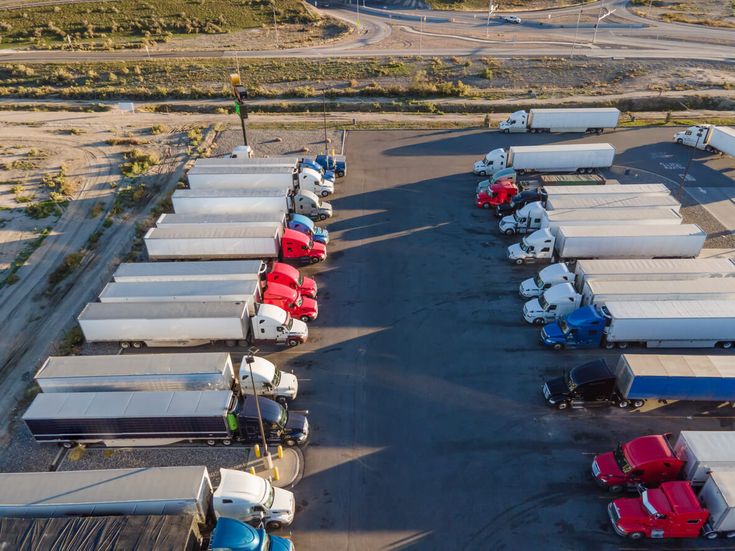On paper, permit loads regulations may look the same across the map—but in the real world, how they’re interpreted, applied, and enforced can vary wildly. One rural Texas county might wave a truck through that would be dead-stopped in a coastal California township for the exact same dimensions.
That’s the frustrating beauty of compliance in North America’s tangled regulatory web—2,500+ municipalities, counties, states, provinces, and special districts each with their own quirks, expectations, and enforcement cultures.
At Reliable Permit Solutions, we’ve seen firsthand how carriers—especially those running multi-jurisdictional routes—get blindsided by assumptions that similar-looking rules mean similar enforcement. Spoiler: they don’t.
This post isn’t just another compliance checklist. This is a strategic breakdown of how permit loads are treated differently across regions, why your oversize load might be legal in one place and illegal 20 miles later, and how to stay ahead with a smarter, localized compliance approach. Let’s get into it.
The Regulatory Hierarchy: Who Really Runs the Show?
Let’s start at the top. In the U.S. and Canada, permit loads are governed by a complex mix of:
- Federal rules: Setting minimum standards for safety and interstate commerce.
- State or provincial authorities: Managing primary highways and regional interpretations of federal standards.
- Local governments (cities, counties, districts): Often the strictest layer, especially on secondary roads, bridges, or during seasonal changes.
Where it gets messy is in overlapping enforcement. A carrier might meet federal and state criteria for permit loads, only to find a bridge in a small township imposes a lower weight threshold that wasn’t included in the state permit. Who takes precedence? That depends—and knowing which regulation “wins” in a gray-area situation can mean the difference between on-time delivery and a hefty citation.
Reliable Permit Solutions helps clients navigate this hierarchy by identifying not just the written laws, but how each entity enforces them in practice.
Not All Localities Are Built the Same
Here’s where things get really nuanced. Across the continent, patterns emerge based on locality type and geography:
- Urban municipalities often have tighter restrictions on permit loads, especially in downtown cores where pedestrian and infrastructure concerns dominate.
- Rural counties may be more flexible—but less predictable, as enforcement can be driven by a single local official’s interpretation.
- Coastal regions (think East Coast ports or West Coast corridors) emphasize environmental protection and often enforce stricter axle and width standards.
- Inland and agricultural zones, in contrast, tend to prioritize freight efficiency and may accommodate wider seasonal loads.
- Special economic zones or energy corridors (e.g., oil sands in Alberta or the Permian Basin in Texas) often issue expedited permits or create custom permit categories for industry-specific needs.
- And don’t forget seasonal adjustments—like thaw restrictions in northern states or fire season detours in the West—that can suddenly shift the rules.
What does this mean for carriers? You could be running a fully compliant rig under your usual route permits and still be out of spec once you cross into a new jurisdiction. Locality-specific knowledge isn’t just nice to have—it’s mission-critical.
Regulatory Translation: Reading Between the Lines
The difference between success and shutdown often lies not in the regulation itself, but in how it’s read. That’s why Reliable Permit Solutions emphasizes what we call regulatory translation—decoding how similar language can imply very different actions across jurisdictions.
For example, one region’s permit may say “load must not impede traffic flow,” which a rural officer may overlook, but a metro enforcement agent could interpret as a violation due to slow incline speeds. Same words. Different consequences.
Permit loads compliance isn’t about memorizing rules—it’s about anticipating how they’ll be applied in context.
The Real Compliance Battle: Verifying What’s Current—and True
With 2,500+ jurisdictions, the bigger issue often isn’t the law—it’s knowing whether the law you’re reading is current. Changes in road conditions, digital systems, seasonal notices, or local ordinances aren’t always published clearly or updated in third-party systems.
We recommend these strategies:
- Always cross-reference digital databases with live calls to local authorities.
- Document all communications regarding permits and exceptions.
- Keep a digital trail that shows you took reasonable steps to verify compliance.
- Know your tech: Some jurisdictions accept electronic permits via mobile apps. Others still want paper copies taped to the window.
Reliable Permit Solutions works with every major permitting system, but ultimately—final compliance is on the carrier. No matter how much support you have, you’re the one rolling the wheels.
Strategic Advantage Through Local Knowledge
When it comes to permit loads, the best carriers don’t just follow regulations—they anticipate them. They know which city is hyper-strict on lane deviations, which state will weigh your rear axle to the decimal, and which special district is on a permit approval backlog.
That’s why carriers working with Reliable Permit Solutions don’t just get paperwork—they get strategy, insights, and a team that’s been through every interpretation in the book. And while we handle the heavy lifting, the carriers who thrive are the ones who ask questions, confirm details, and never assume.
Permit Loads Are About Information Management, Not Just Permits
If this article has made anything clear, it’s this: permit loads are no longer just about height, width, and weight. They’re about interpreting enforcement culture, decoding vague language, staying digitally agile, and confirming every assumption before hitting the road.
With 2,500+ variations in how rules are applied, carriers need more than a permit—they need a system for managing jurisdictional chaos.
And that’s where Reliable Permit Solutions shines.

